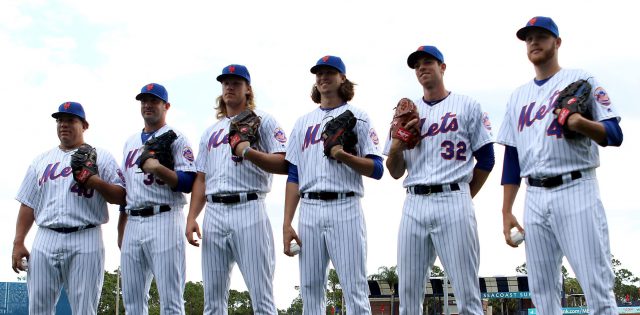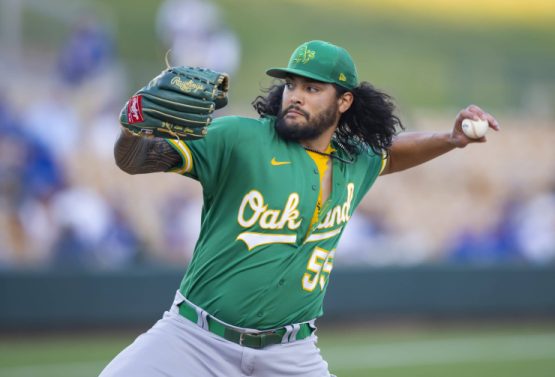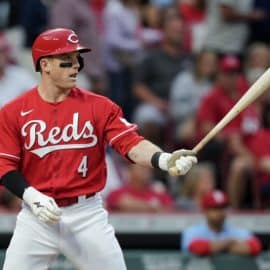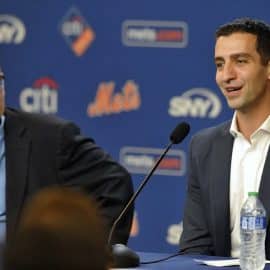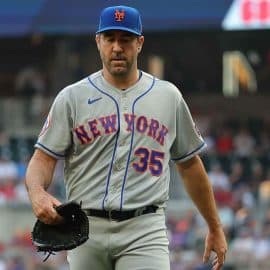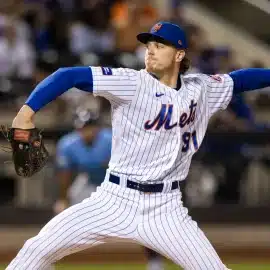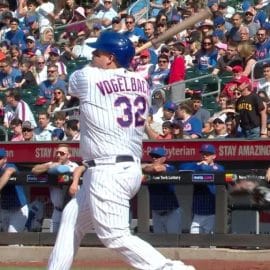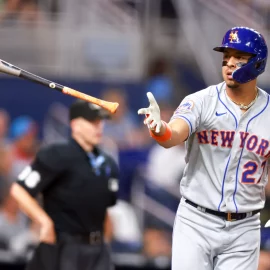With the off season now here, it’s time for Sandy Alderson to get to work. We’ll be moving around the diamond to see what challenges the Mets face for 2017, and see what we could do to help fix them, or perhaps mess them up even more. Look, we don’t get paid for this, so Sandy should listen to us at his own risk.
The Starters
Remember last season when the Mets had six viable starters and they were going to steamroll over everybody so hard that all Bartolo Colon had to do was sit back and drink Moscow Mules the whole season?
Yeah … that didn’t work out so well.
Bartolo, in fact, was the one guy that made it through the entire season. And how you do that while drinking Moscow Mules is anybody’s guess. Noah Syndergaard had a bone spur. Steven Matz had a bone spur removed. Jacob deGrom had an irritated nerve. Matt Harvey lost a rib. And this was Zack Wheeler’s season:
The Mets also traded for Jon Niese, which may have been the best trade the Mets made in a while for two reasons: 1) It got them out from under a second season of Antonio Bastardo. And 2) Niese’s injury opened the door for Robert Gsellman to save the season. Think about that … a guy who was 1-5 with a 5.73 ERA in Las Vegas turned out to be a better option than Jon Niese, and the Mets would not have made the wild card game without him. The trade for Jon Niese saved the Mets’ season. And now, the Mets have an abundance of riches in the starting rotation, albeit with the caveat: “if healthy”. Even Gsellman had a busted left arm that prevented him from hitting (and he still bunted for a hit). That spring training picture for 2017 is going to be a little more crowded with Gsellman, Seth Lugo, and all of the casts, slings and crutches from off-season surgery.
This could be a blessing and a curse. If everybody was healthy last season, we wouldn’t know about Lugo and Gsellman at all. But we might have found out about them this season, and quick. The great thing about having a rotation that the Mets have is that when healthy, a five man set of stars will get you through a lot of regular seasons. It would have gotten them through 2016 if they weren’t all hurt. But two things: 1) Super Rotations are no lock to get you through the playoffs (see: the Atlanta Braves from 1991-2005 and the 2010 Phillies), and 2) At a certain point, you’re going to have to pay all of them. That day is coming. And you know that a stud set is useless if there’s no foundation to put them in. You want to pay five starters big money when only three are going to pitch the bulk of your innings in the playoffs? Yes, it would be great to have a season where Jake, Noah, Matz, DK, and Wheeler are healthy. But they can’t stay together for ten seasons even in the best case scenario. So at some point, the Mets have to think about who are going to be the cornerstones, and who will be the trade chips.
If everybody was healthy this season, then we could have had a resolution to this. This would have been the off-season to trade Matt Harvey … off a full season removed from Tommy John surgery, the Mets could have maximized his trade value with two seasons left. Now they’ll have to hope for a bounce back season if they want to get decent value from him. Wheeler’s value, meanwhile, is stunted forever unless he can actually pitch. The other three aren’t going anywhere. So at least one of Lugo/Gsellman will have to start the season in long relief. And with the state of the bullpen and the worry about bridging the starters to the late inning guys, that isn’t a bad thing. Because Harvey and a healthy Wheeler will have to pitch to purely build up value if those are the cats the Mets want to trade. Otherwise, they trade one of the other three, and that’s probably not an option (nor should it be.) It’s basically the long version of what Sandy Alderson said the other day:
“Because of all these nicks and other things, I think it’s unlikely we trade any of that pitching,” he said. “In part because it is our strength, and in part because right now it might be discounted a little bit in value.”
He’s right, except for the fact that starting pitching is at such a premium this season because Rich Hill is the most attractive option on the market. Somebody could make a Justin Verlander or even a Drew Smyly available and it’ll become the moment when Dan Akroyd screams “sell” in Trading Places.
As far as Bartolo Colon goes, I’m not sure where he fits now with the emergence of Lugo and Gsellman. Of course, we said that last year and he turned out to be the Mets most consistent pitcher. But if he holds fast to wanting a two year deal, then it becomes a shell game of resources. This situation might even be more Murphy than Murphy, because the Mets could commit two seasons to a guy to be a sixth pitcher if everyone stays healthy. From that standpoint, I understand not wanting to throw money around for insurance just as I understood not throwing a ton of money at Daniel Murphy in case David Wright got hurt. Now I should know better, because players always get hurt under Ray Ramirez’s watch. But with seven pitchers battling for five spots (or more likely four pitchers battling for the last two spots), is two seasons of Colon a good use of your resources?
That’s why I’m thinking that deGrom, Syndergaard, Matz, Harvey, and Lugo will be your starting five, Gsellman in the bullpen, and Wheeler will be on the disabled list with the caveat that he starts if he’s healthy to build up some value. Then the Mets can make some serious decisions after 2017 about how to allocate value. Because eventually, Lugo and Gsellman will profile better as middle/back of the rotation guys than Harvey and Wheeler, who might be better suited to be aces elsewhere. And remember, you can’t pay them all. Of course, Colon being somewhere else will disappoint the legions of fans hoping for a Bartolo Garden Gnome this season.
(Update: Colon has indeed left for pastures south, signing a one year, $12.5 million deal with Atlanta. I’m mildly surprised he left for a one year deal, but he gets to be a top half pitcher somewhere else, and the Mets get to take the $7.25 million they spent on someone who, at best, would have been a middle-bottom half starter here. For the Mets to spend $12.5 million for an insurance policy would have been dicey when they have other needs to fill. For the fans that loved the circus that Bartolo brought, remember that nothing lasts forever. Don’t cry because it’s over, smile because it happened. And smile because he didn’t get old with the Mets. Entering his age 44 season, the odds go up that he gets old somewhere else. And if everybody in the Mets rotation gets hurt again this year, then the team has bigger problems than not re-signing Bartolo.)
Pipe Dreams
Health?
Next up, we’ll look at the relievers, because the starters can’t pitch 1,472 innings.
Add The Sports Daily to your Google News Feed!
